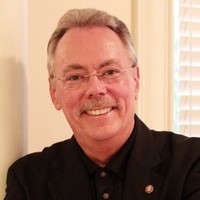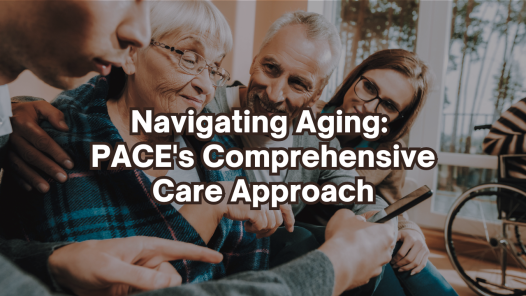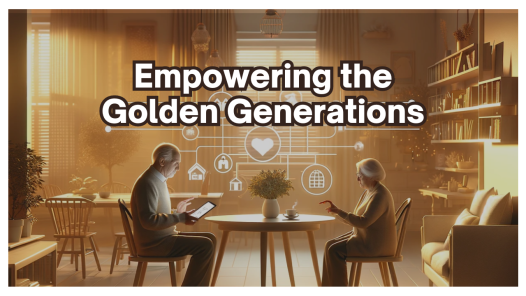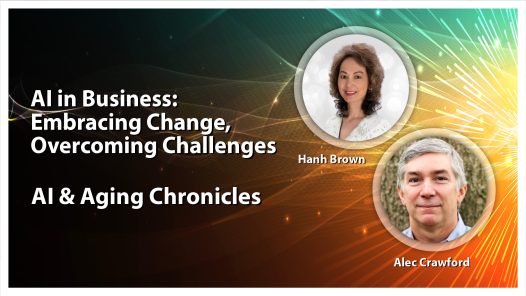
Please give a warm welcome to my guest Jeffrey Anderzhon, FAIA. He is Senior Planner/Design Architect for Eppstein Uhen Architects
specializing in environments for the elderly. He holds a Bachelor of Architecture degree from Illinois Institute of Technology where he received the 2008 Alumni Professional Achievement Award. He is licensed as an Architect in 26 states and a member of the College of Fellows, American Institute of Architects. He is co-author of the books “Design for Aging Post Occupancy Evaluations” and “Design for Aging, International Case Studies of Building and Program,” and contributing author for the books “Managing the Long-Term Care Facility” and “In Pursuit of the Sunbeam.”
Jeffrey has written numerous articles on environments for the elderly and is a frequent speaker at professional organizations, both nationally and internationally, on environments for the aging and their relationship to quality of life. He served as 2005 American Institute of Architects (AIA) Design for Aging Review Jury Chair, 2006 Chair for the AIA Design for Aging Knowledge Community, 2007, 2009 and 2011 Jury Chair for the International Association of Homes and Services for the Ageing Design Symposium, and juror for the Design for Future Aging, Student Competition, Yonsei University, Seoul, Korea in 2006 and 2007. He has designed and consulted on senior living projects throughout the U.S., in the U.K., Australia and South Korea.
Considerations in designing environments for senior living
- Creating community and engaging residents in that community
- Residents within the campus
- Family and outside community members
- Financial sustainability of community
- Understanding needs and desires of residents and how they might change
- Versatility of design considering future needs
- Addressing physical, intellectual and spiritual wellness
- Operational efficiency considering shrinking work force pool
- Gaps in senior living environments to serve diverse population
- Consideration of healthy environments considering epidemics or pandemics
Hanh Brown: [00:00:00] Today, my guest is Jeff Anderson.
[00:01:14] He is a fellow of the American Institute of architects. He is a senior planner designed architect for the Epstein UConn architect, specializing in environments for the elderly. He holds a bachelor of architecture degree from Illinois Institute of technology, where he received the alumni professional achievement award. [00:01:34] He’s a licensed as an architect in 26 States and is a member of the college of fellows, American Institute of architects. He is a co-author of the books designed for aging post occupancy evaluation, and the book designed for aging international case studies of building and program. He has designed and consulted and senior living projects throughout the United States United Kingdom. [00:01:59] Australia and South Korea. Well, hi, Jeff. Thank you so much to be here.Jeffrey Anderzhon: [00:02:04] Well, it’s my pleasure. I appreciate the opportunity to,
Hanh Brown: [00:02:06] I read your documents on LinkedIn and they were highly informative. So tell us about your journey. You know, where you’re from and how you got started into senior living.
Jeffrey Anderzhon: [00:02:17] Well, I’m a native of Iowa.
[00:02:19] My journey has taken me from Iowa to Chicago, to Nebraska, to Washington DC, and back to Iowa. That’s my professional journey. I guess I live in Iowa now. And my journey professionally into senior living has been like many others and idea of professions. It’s been kind of serendipitous. I got the opportunity to complete a commission for a client when I was younger and had my own firm about 40 years ago to do an addition to a skilled nursing. [00:02:53] As I did my research, both from a code standpoint and from an environmental standpoint, I. Quickly realized that the choices of facilities for seniors to live in was very limited and they were not very home-like. They were not very comfortable. So I tried to create as nice and environment in that small edition as I could. [00:03:18] And it was apparently successful because the client came back and asked me to do more work on other facilities. And it just blossomed from there. It’s a research based kind of profession that I’ve followed, trying to understand how to make the quality of life better and help seniors thrive in their environments.Hanh Brown: [00:03:36] So your background is in the architectural design environment of senior living.
Jeffrey Anderzhon: [00:03:41] Of course my education and professionalism, the design portion. But as we receive commissions to do senior living environments, We almost always work at the front end with financial feasibility consultants and market feasibility consultants, as well as constructors to hone in on the performer for the project, the financial sustainability for the project, making sure they’re hitting their target market with the design and their budget.
[00:04:14] It’s a intensive, I guess, front end work prior to putting any lines on paper.[00:04:19] The price point hovers around 15 to 20,000.
Hanh Brown: [00:04:24] The market feasibility.
Jeffrey Anderzhon: [00:04:25] Yeah. Yes. The market feasibilities that we’ve seen, the consultants that we’ve worked with 15,000 is. Probably at the low end, they can range up to 30, 30, 5,000.
Hanh Brown: [00:04:37] Well through the three key components, the market feasibility, conceptual design and the financial feasibility. In of course we are in the midst of the pandemic. Let’s talk about considerations or lessons learned that we need to incorporate into the design.
Jeffrey Anderzhon: [00:04:54] Sure. Well, starting with the market feasibility, we’ve seen too many clients just work on a kind of a gut reaction.
[00:05:01] They think that there’s a need in their area for a senior environment of one sort or another. And don’t do the research necessary to prove that need. Market feasibility is critical. I think to the success of a project and a good market feasibility study will include not only the traditional zip codes that a provider may draw from, but take into account some obstacles that may come into that area that they’re dealing with such as interstate highway. [00:05:34] People don’t necessarily want to move to a senior living environment that. Their relatives or family members have to cross a river or a, uh, interstate highway. So those sorts of kind of cultural or physical obstacles come into play and a good market consultant will take those into account and bring those into the market study. [00:05:57] The consultants that we work with, we want to make sure they do that as well as look at the traditional areas that the sponsor may draw upon the financial ability for. Potential residents to pay for the services and housing that may be provided the availability of outside services that, that may come into play. [00:06:19] Also, those all are a part of a good market study. That’s the first thing that has to happen when a sponsor or developer looks at a potential project. If the target market that they’re after isn’t available, then that’s. Where are the project should stop. Hanh Brown: [00:06:35] If the location demographic age, group income do not command for a senior housing, or if the income doesn’t support the monthly rent, then the project should stop at that point.
[00:06:48] And it should not go on instinct.
Jeffrey Anderzhon: [00:06:51] Yes. I agree. We all live in our own mental culture. We want to live in a particular part of town. We shop in a particular part of town. And if we go outside of those areas, those physical areas, we may be uncomfortable. And that has to enter into the thoughts of the developer.
Hanh Brown: [00:07:12] Yes. The folks that are going into senior living are continually active. They want to continue their lives like shopping, golfing, going up to theaters. And they’re also very tech savvy. The major demographic in this is the middle market. So what is your take on that?
Jeffrey Anderzhon: [00:07:30] Well, a middle-market is as long been kind of a forgotten population cohort for the more affluent individuals there’s ample.
[00:07:40] Choices of retirement communities and care communities for those who are. Or that have no savings or no income. There are safety nets that are provided for those individuals through tax abatements and affordable housing and HUD projects. But the middle market has been ignored and the baby boomer generation has a huge. [00:08:07] Population cohort that is in that middle market. And thankfully that’s the attention that developers are paying to that is gaining some momentum. And thankfully for that, I think that will be a very fast. It is already a very Fastly growing market. That developers and sponsors are looking at problem with the middle market is making the financials work, making sure that construction costs are in line with the performance that are put forward for that middle market development and that the rents are affordable for that middle market and that the services provided in the staffing necessary for that come into line with the financial sustainability of that. [00:08:52] There are some developers that are very good at that. And others who want to get into it, that just don’t know what they’re doing.Hanh Brown: [00:08:57] Market feasibility, architectural and environmental design, financial feasibility are all key determining factors in seeking financing. So if they are not sound or if you’re not able to trust the five to the bank and Abbot fleet, the strength of the team, then you’re not likely to get financing.
Jeffrey Anderzhon: [00:09:17] Yes, absolutely. They do need it. They need to do the due diligence. If you will, to make sure that their lenders or their bankers will go along with their project and finance it.
Hanh Brown: [00:09:30] So, what is your thought on the build environment?
Jeffrey Anderzhon: [00:09:34] Well, the design of the built environment has to comply with the target market, with the people that are going to live in that environment.
[00:09:43] And it has to comply with the financial feasibility. And if it doesn’t, obviously the project is not going to be successful people aren’t going to want to move there and the finances are not going to be such that it is just, it’s a sustainable community. So the designers have to understand both financial and market sustainability, financial feasibility, and market feasibility, and design to that standard other components or the other member of the team that has to be at the table at this time is the constructor. [00:10:16] The designer has an idea of what construction costs are, but it’s a constructor that has their finger on the pulse of construction costs and availability of materials and how inflation will affect the construction costs. So they will be an important component to the financial feasibility study and they have to have their input at the front side of any project. [00:10:38] So, again, all of this has to come together into a plan that makes sense before any lines are put on paper.Hanh Brown: [00:10:46] What’s your take on dementia, friendly architectural design,
Jeffrey Anderzhon: [00:10:50] well, dementia friendly environments take into account the acuity of the resident. They take into account the loss of memory because of dementia because of Alzheimer’s and provide a physical environment that supports those physical and mental losses.
[00:11:11] The environment provides. Cues for the resident to move around the space, to use the space as it was meant to be, and not be filled with anxiety, as they may wonder through the space, the environment has to work together with the sponsors program for that environment. To make sure the residents are active to make sure they’re not, if you will rummaging through other people’s ownership and spaces and to make sure that the residents are fully involved in the program that is provided.
Hanh Brown: [00:11:46] For new development. What is your take on dementia friendly design on flooring, lighting and spacing.
Jeffrey Anderzhon: [00:11:53] Yeah. You know, there are some anecdotal numbers out there that say everybody who is over 85 has some sort of dementia. That may or may not be true, but we need to accommodate the loss of memory for individuals as they age, and as they find that they have some sort of dementia or Alzheimer’s the aspect of Alzheimer’s has really come into effect with our extended lifespans.
[00:12:20] And the acknowledgement that there is this brain disease that older people contract. So we have to make sure that the environments can accommodate that loss of memory. And as the residents move through that environment can help them be as independent as possible. And as I said before, can thrive in their whatever condition they may be in member support. [00:12:46] Assisted living is extremely popular. At the moment there is a need for it. I think we’re becoming a bit saturated for memory support assisted living developments, but there are still pockets in the country that are underserved by memory support. So I think there is still areas for developers to come in and to make a financially viable connection for a development. [00:13:14] So let’sHanh Brown: [00:13:14] talk about the assisted living design.
Jeffrey Anderzhon: [00:13:18] Well, let’s start with memory support assisted living. When we look at memory support assisted living resident rooms, for example, we’ll want to allow the layout of that room to provide visual cues for the resident to know where the bathroom is. We want to make sure that there are.
[00:13:38] Environmental elements that can support the elements from the residents’ past that they can bring in and kind of jog their memories. If you will, wayfinding in a memory support, uh, is supported by memory boxes where the resident and the family members of the resident can provide elements from the resident’s past, such as military metals or even toys that they may have had when they were young. [00:14:05] And that will cue them to where their room is and to the wayfinding throughout the community, we often provide in memory support, assisted living two closets, one that is locked and only the staff can access and help the resident dress in the morning. Our one that the resident has access to. If they’re still able to dress themselves in the morning and we encourage the staff in their programming to lay out in that case to lay out the clothing in order of the way you put them on. [00:14:36] So it’s a little easier for the residents to put their clothing on. Lighting circadian rhythms is extremely important in memory support, assisted living. So there are lighting systems that support that circadian rhythm and allow the resident to understand it’s daytime or nighttime and time too. Turn in and go to sleep. [00:14:59] We promote our advocate, small household memory support, assisted living so that there are 10, 12, or hopefully no more than 12 or 14 at the tops residents in a small household and provide a household kitchen where the residents can participate in preparation of meals are vicariously participate in the preparation of meals and. [00:15:24] That odor of the meal preparation that aroma of the cooked meals can walk through the household and encourage the residents to intake their meal. So those sorts of things are kind of common sense in a way, but there are things that we consider when we’re designing memory support assistance.Hanh Brown: [00:15:43] So the goal is to make this a home setting.
[00:15:46] The feel and touch the whole experience as similar or as much as possible to where they live for the last 40 to 50 years. The residents are at their new home and it needs to be safe, a welcoming environment for family and guests where they can have entertainment and so forth.Jeffrey Anderzhon: [00:16:05] That’s absolutely right.
[00:16:06] The bottom line is as designers, we’re creating in senior living. Anyway, we’re creating a home for the residents. We’re also creating a workplace for the care staff. So it’s kind of a unique building type.Hanh Brown: [00:16:19] so let’s talk about wellness. So what are the key components that you’re considering?
Jeffrey Anderzhon: [00:16:23] We look at wellness in three different aspects, physical wellness, intellectual wellness, and spiritual wellness.
[00:16:29] So in our designs, we try to make sure that we accommodate all three in the built environment. So physical wellness is fairly straightforward. Fitness centers and a wellness program is important to include in a senior living independent living environment. But the program should also include not only the fitness center and perhaps personal trainers, but also outside wellness, walking paths and exercise stops as you go along that walking path. [00:17:03] And even beyond that, we have a client. For example in Oklahoma that is really into wellness and they have teams of dragon boat competitors. And I don’t know if you know what the dragon boat competition is, but they go around the country with these kind of Norris or Southeast Asian dragon boats, and compete in rowing competitions. [00:17:27] With other age groups. That’s been very popular for that client. So physical wellness is contributes to intellectual wellness or mental wellbeing because your body is more active, more vibrant. So we want to make sure that we have media centers that can accommodate university lectures. For example, our online university courses, and perhaps even bring in concerts are spaces that can accommodate concerts. [00:17:58] Our small group performances, you know, maybe one act plays that sort of thing. And then of course, spiritual wellness. We want to make sure that residents have the opportunity to continue their spiritual journey as they go through life with meditation rooms are even chapels depending on the sponsor. So we want to make sure that our designs accommodate all three of those approaches to wellness, because one without. [00:18:26] Either of the others is just kind of a halfway approach.Hanh Brown: [00:18:30] Exactly. I’m so glad that you said that. I think you need all three components throughout your life, whether you’re a baby boomer or in your twenties or thirties, you need all of it. Physical, mental, and spiritual development. I believe that with full conviction, particularly at the later years, because I’m thinking in terms of your freedom.
[00:18:50] Your mobility is now somewhat limited, right? You cannot drive, perhaps you’re using a Walker. So basically you have some limitations. And the only component that may give you some kind of inner peace that that would allow you to go as far as you want is really your spirit.Jeffrey Anderzhon: [00:19:09] Right. Particularly in, you know, the times we’re living in currently the pandemic when senior living environments are even more isolated than they have been in previously because they’re locked down and nobody in nobody out it’s important to continue that spiritual journey with online services or online, spiritual encouragement.
[00:19:31] And intellectual journey with the ability to continue your mental.Hanh Brown: [00:19:37] Absolutely. You need to have all three, one without the other is not as effective.
Jeffrey Anderzhon: [00:19:43] Absolutely.
Hanh Brown: [00:19:44] See the baby boomers are in isolation. They need food to be brought to them away with little or no contact to risk the exposure of the virus. So architecturally, what design can be incorporated, where food is brought to the room without the caregiver coming into the room.
Jeffrey Anderzhon: [00:19:59] Well, yes, that has to happen. You know, our future designs for senior living environments have to take all of these into account now that we know. That it’s a possibility that there’ll be another pandemic. So we don’t want to be like a jail cell where the attendant brings a meal and shoves it through a slot.
[00:20:18] We want to have, even when a resident is isolated in their room, meals are an important part of a resident’s day. If not the most important part of a restaurant. So the way you can enhance that, even if you have to bring the meal on a tray and drop it by the door, you know, just include a little, a vase with a flower on it.[00:20:40] A note from the caregiver that says, thinking about you, enjoy the meal. That’s right.
Hanh Brown: [00:20:46] We need to continue to serve. Meantime, making sure that they are protected. It’s increasingly difficult though, for folks with the later dementia who are already in isolation and for us to build the gap,
Jeffrey Anderzhon: [00:21:00] my father had Parkinson’s and with Parkinson’s, there is a dementia that goes along with that, and it’s very virulent causes hallucinations and very odd concepts.
[00:21:12] Sitting with him in the nursing home and talking, he would go off onto these tangents that were just weird and airy and it shocked us at first, but we had to go along with it. And eventually we just learned to play along with the hallucinations he was having and he would come out of it and he’d be fine.Hanh Brown: [00:21:31] It’s a progression of life and the sooner the family come to terms and make the best out of it, the better at the entire family will be, you know, we all had to go through this process to where we are in a better place right now, which is we embrace it. We celebrate it and we laugh. Of course, this is all after we grieve
Jeffrey Anderzhon: [00:21:51] and make life as enjoyable and as important for that individuals, as you can
Hanh Brown: [00:21:58] understand all this until they had to face it.
[00:22:02] And then the family goes to a process where they grieve and then later they learn to accept. You have more empathy as you age and as your parents’ health declined, you then wish you were more empathetic when you were younger and maybe not so consumed with your own life.
Jeffrey Anderzhon: [00:22:20] I was fortunate because I was working in senior living environments that I had a better appreciation for the elderly at an earlier age.
[00:22:31] But those bankers or insurance salesman, they don’t necessarily have that same empathy because they aren’t.Hanh Brown: [00:22:39] Yeah. You gain empathy as you go through this with your parents.
Jeffrey Anderzhon: [00:22:42] I would like to think that one of the good things that comes out of this pandemic is that the younger generations having to be isolated as they are, are more appreciative of the isolation that seniors are feeling.
Hanh Brown: [00:22:56] Can you speak to the architectural design and the build environment,
Jeffrey Anderzhon: [00:23:02] sign of senior living environments. We’re seeing some changes that could be see changes. One is the versatility of spaces. Almost without exception, the clients that we have for assisted living and skilled nursing, want those environments to be designed so that the license can change back and forth so that if skilled nursing popularity, declines, as it is, they can switch that environment with ease and with economic efficiency to an assisted living.
[00:23:37] We even have one client that we’re doing a fairly major skilled nursing and memory support, assisted living project who wants those resident rooms to be, if they’re two resident rooms or combined can be independent living. Affordable independent living. So that’s kind of a challenge, but that versatility is important for the financial feasibility for that matter for the financial sustainability, the long-term financial sustainability of the project.Hanh Brown: [00:24:07] So the size of the rooms, is it versatile enough where one can use it for independent living and assisted living? Are there distinctions, layout size constraints of the room?
Jeffrey Anderzhon: [00:24:19] Well, then I would ask the question, why should there be, why should the sizes of a skilled nursing resident room be smaller than the living room of an independent living?
[00:24:28] It’s still a home for the resident and the size of the skilled nursing resident rooms should accommodate the needs of that resident and the lifestyle of that resident. It’s not only a bedroom, it can be a work room. It can be a room where they invite their neighbor in to play cards at a small table. [00:24:47] There should be social areas, storage areas for the things that they bring to the home. And without changing the room size, it could accommodate a studio assisted living apartment.Hanh Brown: [00:24:59] Are you involved in the work of continuum of care or is it assisted living and dementia care?
Jeffrey Anderzhon: [00:25:06] The work that I’m involved with.
[00:25:08] It’s a variety of work. I’ve worked on standalone assisted living and memory support, assisted living combinations, and a lot of repositionings of continuing care retirement communities or life plan communities as they’re called now. Additions to those complete turnarounds. For those many of the CCS that have been built in this country have gotten some good amount of age and need to provide reinvigorated products for their clients. [00:25:37] They need to provide additional amenities because their clients are demanding and they have older, upper level healthcare, you know, the assisted living and skilled nursing that. Are in the old kind of medical models that are no longer popular. So a lot of the work that we’re doing is the repositioning of those kinds of campuses for the future.Hanh Brown: [00:26:00] Well, that is great. The repositioning revamping, not only cosmetics, but also technology. There are new developments in it’s hard to compete.
Jeffrey Anderzhon: [00:26:09] The competition is stiff.
Hanh Brown: [00:26:10] So let’s talk about the third component, the financial feasibility.
Jeffrey Anderzhon: [00:26:14] Financial feasibility is critical. Obviously you, you don’t go into business to lose money.
[00:26:20] So working at the front end of a project before the project is even conceived are at the conception point to make sure that what you have in mind, what the client has in mind is financially feasible. So working with there. CFO or with an independent financial feasibility consultant is important to get that performer in shape for the banker and to make sure that all those, the costs that are involved in getting the project underway are included all the soft costs and hard costs, the legal fees, the architectural fees, the civil engineer, the permanent fees, and then the operational. [00:26:59] Is very important because in the end, the life of a building, the operational costs are 60 to 70% of the overall costs of the life of the building. And the construction costs are what, 30 to 40%. So making sure that the operational costs are in line and then working with those numbers to make sure the building is staff friendly enough to and efficient enough for those operational costs to be reality. [00:27:26] Those three elements, the, the market feasibility, the financial feasibility, environmental feasibility, they’re all critical to the success of the project. And if they’re not paid attention to and intricate details and the project is not going to succeed or at least not succeed as vision.Hanh Brown: [00:27:44] Yup. Yup.
[00:27:45] Staffing training and retaining are huge topics. And they’re known to be problemsJeffrey Anderzhon: [00:27:51] mean is a huge issue for senior living environments. When you have, for example, skilled nursing facilities in this country, some of them have 150% turnover in a year. And that’s just not sustainable. So these folks
Hanh Brown: [00:28:06] are the ones caring for your parents and grandparents.
[00:28:09] You don’t want them to be motivated to leave to let’s say, go to McDonald’s for 25 cents more. So we have a choice who we hire provide a career path, training, insurance, family, package incentives, and mostly make sure that your margins accommodate all this. It is a very challenging task to balance.Jeffrey Anderzhon: [00:28:29] Well, I agree with you.
[00:28:30] It starts with the wage that is paid to CNAs when they can get as much money or even more flipping burgers at McDonald’s, why would they want to work in a senior living facility where they have to change nappies? It starts there, but then it has to be the culture of the sponsor or the developer. The culture of staff empowerment is important.
Hanh Brown: [00:31:10] If the team that you’re talking to, if they don’t believe that principle in full conviction, then there’s no point to move forward.
Jeffrey Anderzhon: [00:31:17] Yeah. Have all the right numbers and you have the right market study and you go to the bank and you’re not passionate about what you’re doing. The banker will know that. And that’s a black Mark against the loan.
[00:31:30] And we’ve been fortunate enough to work with consultants on a regular basis who are in the industry and specialize in this industry and are passionate about the work they do and creating community for the residents.Hanh Brown: [00:31:43] So you’re creating a home for the baby boomers for the later third or fourth. Part of their lives.
[00:31:51] So you need to uphold the heritage that they come with. I mean, they likely to be signing off while they’re in your community and all that is a heavy responsibility.Jeffrey Anderzhon: [00:32:02] One of the discussions we almost always have with sponsors or developers is the inclusion of amenities and what amenities you want to include because amenities are not revenue producing.
[00:32:11] They take up space and they cost money to build, and they cost money to operate, but they don’t generate rentals except that those amenities create the community and bring the resonance of that. Facility together.Hanh Brown: [00:32:27] Yes. It retains residents in it is a means to create community for social gathering and perhaps, you know, referrals.
[00:32:34] So all of which falls under marketing.Jeffrey Anderzhon: [00:32:37] Haynes residents, and, you know, at least by word of mouth that brings in new residents. So at minimum, we tell our clients that including these amenities as a marketing cost, Those are the things including a bistro or a bar or an internet coffee shop. They may not add to the bottom line financially, but they create community and the community is what adds to the bottom line essentially.
Hanh Brown: [00:33:02] Well, thank you so much, Jeff. I enjoy our conversation and I look forward to talking to you again.
Jeffrey Anderzhon: [00:33:06] Well, I appreciate the opportunity. I appreciate you reaching out.
Hanh Brown: [00:33:13] Thank you so much.
Jeff’s Links:
LinkedIn: https://www.linkedin.com/in/jeffreyanderzhon/
EUA (Eppstein Uhen Architects): https://www.eua.com/













